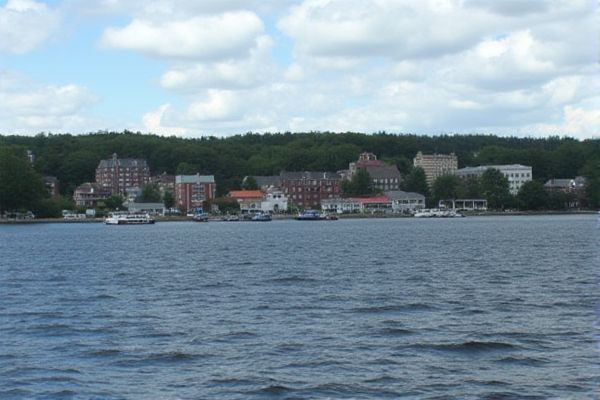
Transportation and commuting in Maine: Public transportation options are limited. Car ownership is common. Maine Turnpike tolls apply. Commuting times vary by location. Interstate 95 is a major route. Seasonal road maintenance impacts travel. Limited rideshare services. Bike-friendly communities increasing. Snow tires needed for winter driving. Public bus services available in cities.
Public transportation options are limited.
While Maine has a network of 16 fixed-route transit systems and various local bus services, public transportation options are indeed limited, particularly in rural areas where service may be available only once or twice a week, and the frequency and coverage are not as extensive as in larger cities like Portland and Bangor.
Car ownership is common.
Car ownership is highly prevalent in Maine, with approximately 1.34 million registered vehicles as of December 31, 2022. This includes 377,420 cars, 513,295 utility vehicles, 353,172 pickups, and 62,607 vans/minivans. This statistic highlights that a significant portion of the population relies on personal vehicles for transportation, reflecting on the analysis provided by Autos Innovate. This substantial number illustrates the importance of cars in daily travel, particularly in regions where public transportation may be limited.
Maine Turnpike tolls apply.
Maine Turnpike tolls can be calculated using the toll calculator, with discounted rates available for E-ZPass account holders who make multiple trips per month. The E-ZPass system allows electronic toll payments on the Maine Turnpike and over 40 other toll highways, bridges, and tunnels in the eastern United States.
Commuting times vary by location.
Commuting times in Maine vary significantly by location, with average commute times differing across various counties, as indicated by data from the Census Bureau. For comprehensive insights into these variations, the Average Commute Time by County dataset offers detailed information, highlighting how geographical differences can impact daily travel times for residents in different parts of the state.
Interstate 95 is a major route.
Interstate 95 in Maine is a critical transportation route, spanning 303 miles from the New Hampshire border to the Canada-United States border at Houlton. It includes the Maine Turnpike, a toll road from Kittery to Augusta, and serves as the primary north-south Interstate Highway in the state, connecting major cities like Portland, Augusta, and Bangor. This highway also provides access to several rest areas and service plazas along its route, making it an essential artery for travel and commerce. For more detailed information, you can visit the full article on Interstate 95 in Maine.
Seasonal road maintenance impacts travel.
Seasonal road maintenance in Maine significantly impacts travel, with the state facing high costs for winter road maintenance, estimated at $155 million for the 2019-2020 season. Fluctuating weather patterns and the environmental impact of road salts, which affect road conditions and driver safety, pose additional challenges. For more information, you can visit the Maine Department of Transportation's Snow & Ice Control webpage.
Limited rideshare services.
In Portland, Maine, limited rideshare services are available, with Uber and Lyft being the primary options. Although Ride Guru details these choices, it's worth noting that Didi and Ola are not mentioned as available in the area. This highlights the need to plan ahead if you rely on rideshare services while visiting this charming city in the United States.
Bike-friendly communities increasing.
Maine is seeing an increase in bike-friendly communities, with cities like Bath and Brunswick earning bronze-level "Bicycle Friendly Community" designations from the League of American Cyclists, and ongoing efforts to expand cycling infrastructure and promote active transportation across the state. For more details, visit the Bikemaine website for the latest updates on their initiatives.
Snow tires needed for winter driving.
In Maine, studded snow tires are not required by law, but they can be beneficial, especially on icy days. If you're planning to get them, it's important to know that they must be installed between October 1st and May 1st, ensuring compliance with state regulations. Moreover, to adhere to state law, all four tires on your vehicle must be studded. For more insights into the significance and regulations surrounding [Studded Snow Tires](https://wcyy.com/if-youre-planning-on-getting-studded-snow-tires-for-the-maine-winter-you-should-know-this/), exploring comprehensive resources can help you make an informed decision about their usage during the Maine winter.
Public bus services available in cities.
In Maine, 16 fixed-route transit systems provide regularly scheduled bus service, with larger cities offering frequent service and smaller systems in cities like Augusta, Waterville, and Belfast operating five days a week, serving local commuters, shoppers, and others. These services include METRO in the Greater Portland area, Community Connector in Bangor, and various regional services such as the Brunswick Link and Bath CityBus. For more information about these services, visit the Explore Maine website to learn about the state's comprehensive transit options.
